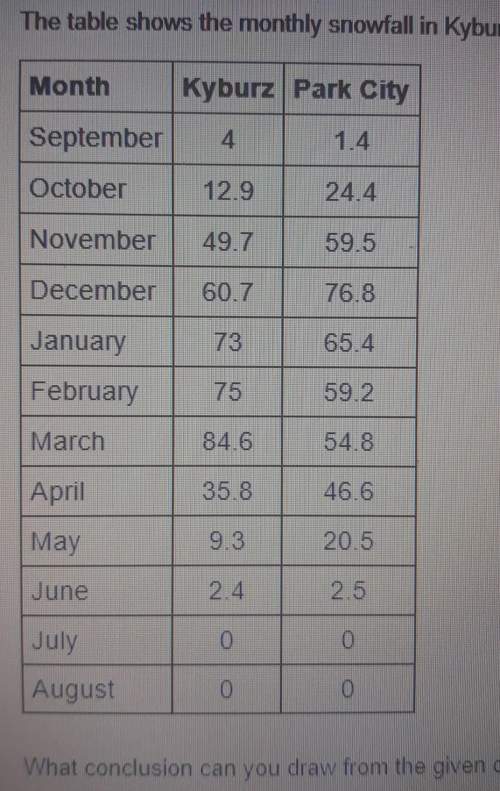
Mathematics, 18.01.2021 02:40 1234fatimasm
Willis analyzed the following table to determine if the function it represents is linear or non-linear. First he found the differences in the y-values as 7 – 1 = 6, 17 – 7 = 10, and 31 – 17 = 14. Then he concluded that since the differences of 6, 10, and 14 are increasing by 4 each time, the function has a constant rate of change and is linear. What was Willis’s mistake?
x
y
1
1
2
7
3
17
4
31
He found the differences in the y-values as 7 – 1 = 6, 17 – 7 = 10, and 31 – 17 = 14.
He determined that the differences of 6, 10, and 14 are increasing by 4 each time.
He concluded that the function has a constant rate of change.
He reasoned that a function that has a constant rate of change is linear.

Answers: 2


Another question on Mathematics

Mathematics, 21.06.2019 15:30
In δabc, if the length of side b is 3 centimeters and the measures of ∠b and ∠c are 45° and 60°, respectively, what is the length of side c to two decimal places?
Answers: 1

Mathematics, 21.06.2019 18:30
Create a data set with 8 points in it that has a mean of approximately 10 and a standard deviation of approximately 1.
Answers: 1

Mathematics, 21.06.2019 22:10
What is the area of the original rectangle? 8 cm² 20 cm² 25 cm² 40 cm²
Answers: 1

Mathematics, 21.06.2019 23:10
Statements reasons 1. ab ? cd; ad ? bc 1. given 2. ac ? ac 2. reflexive property 3. ? adc ? ? cba 3. ? 4. ? dac ? ? bca; ? acd ? ? cab 4. cpctc 5. ? dac and ? bca are alt. int. ? s; ? acd and ? cab are alt. int. ? s 5. definition of alternate interior angles 6. ab ? cd; ad ? bc 6. converse of the alternate interior angles theorem 7. abcd is a parallelogram 7. definition of parallelogram what is the missing reason in step 3?
Answers: 2
You know the right answer?
Willis analyzed the following table to determine if the function it represents is linear or non-line...
Questions

Advanced Placement (AP), 16.12.2020 16:20

Mathematics, 16.12.2020 16:20





















